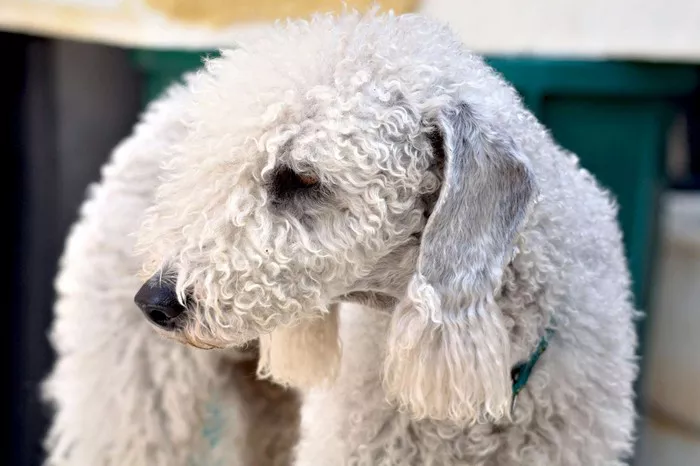The Bedlington Terrier, with its lamb-like appearance and bold personality, is a unique breed that combines elegance with a strong working instinct. While no dog is an exact replica of the Bedlington, several breeds share similarities in physical traits, temperament, or historical roles. This article explores breeds that align with the Bedlington Terrier in key aspects, helping enthusiasts identify dogs with comparable qualities.
Physical Resemblance: Curly Coats and Lamb-Like Features
Bichon Frise
Appearance: Soft, curly white fur and a compact build.
Similarities: Both breeds have hypoallergenic coats and friendly expressions.
Key Difference: Bichon Frises are smaller (10–18 lbs) and have a more playful, outgoing demeanor compared to the Bedlington’s reserved streak.
Kerry Blue Terrier
Appearance: A dense, blue-gray curly coat and muscular frame.
Similarities: Both are terriers with wiry, low-shedding fur and a history of hunting vermin.
Key Difference: Kerry Blues are larger (35–40 lbs) and have a reputation for being more dominant and territorial.
Irish Water Spaniel
Appearance: A thick, curly liver-colored coat and webbed feet for swimming.
Similarities: Both breeds have high energy and require regular grooming.
Key Difference: Irish Water Spaniels are larger (45–60 lbs) and excel in water-based activities, unlike the Bedlington’s preference for dry land.
Temperament and Energy Levels
Airedale Terrier
Personality: Confident, intelligent, and protective.
Similarities: Both are terriers with a strong prey drive and a need for mental stimulation.
Key Difference: Airedales are larger (50–70 lbs) and often used as working dogs, while Bedlingtons are more adaptable to family life.
Welsh Terrier
Personality: Feisty, independent, and affectionate with their owners.
Similarities: Both thrive on exercise and have a reputation for being good watchdogs.
Key Difference: Welsh Terriers have a shorter, stiffer coat and a more compact build.
Whippet
Personality: Gentle, athletic, and eager to please.
Similarities: Both have a sleek, agile build and enjoy sprinting.
Key Difference: Whippets are sight hounds with a smoother coat, while Bedlingtons are terriers with curly fur.
Working Heritage and Hunting Instincts
Border Terrier
History: Bred to hunt foxes and rodents.
Similarities: Both are tenacious, agile, and have a low-shedding coat.
Key Difference: Border Terriers are smaller (11–16 lbs) and have a more rounded face.
Jack Russell Terrier
History: Developed for fox hunting.
Similarities: High energy, fearless nature, and a love for digging.
Key Difference: Jack Russells are smaller (14–18 lbs) and have a more aggressive streak compared to the Bedlington’s calm demeanor.
Parson Russell Terrier
History: Bred for fox hunting in open terrain.
Similarities: Athletic build, strong prey drive, and intelligence.
Key Difference: Parson Russells have a longer coat and are often more vocal.
Size and Maintenance
Coton de Tulear
Size: 10–15 lbs, with a soft, cotton-like coat.
Similarities: Both require regular brushing and professional grooming.
Key Difference: Cotons are quieter and more laid-back, ideal for apartment living.
Soft-Coated Wheaten Terrier
Size: 30–40 lbs, with a silky, wheat-colored coat.
Similarities: Both have hypoallergenic fur and a friendly disposition.
Key Difference: Wheatens are larger and more prone to separation anxiety.
Poodle (Miniature or Toy)
Size: 10–15 lbs (toy) or 15–17 lbs (miniature), with curly, hypoallergenic fur.
Similarities: Both are highly intelligent and versatile.
Key Difference: Poodles come in various sizes and colors, and they’re often more eager to please than Bedlingtons.
Unique Crossbreeds
Bedlington Terrier + Whippet
Appearance: A leaner build with a mix of curly and smooth fur.
Temperament: Athletic and affectionate, combining the best of both breeds.
Bedlington Terrier + Border Collie
Appearance: A longer coat with herding instincts.
Temperament: High energy and intelligence, ideal for active families.
Bedlington Terrier + Shih Tzu
Appearance: A smaller, fluffier dog with a gentle face.
Temperament: Calmer and more adaptable to indoor living.
Choosing the Right Breed for You
Grooming Commitment: Bedlingtons require frequent brushing and trimming.
Exercise Needs: They thrive on daily walks and mental challenges.
Family Dynamics: Bedlingtons are loyal but may be reserved around strangers.


